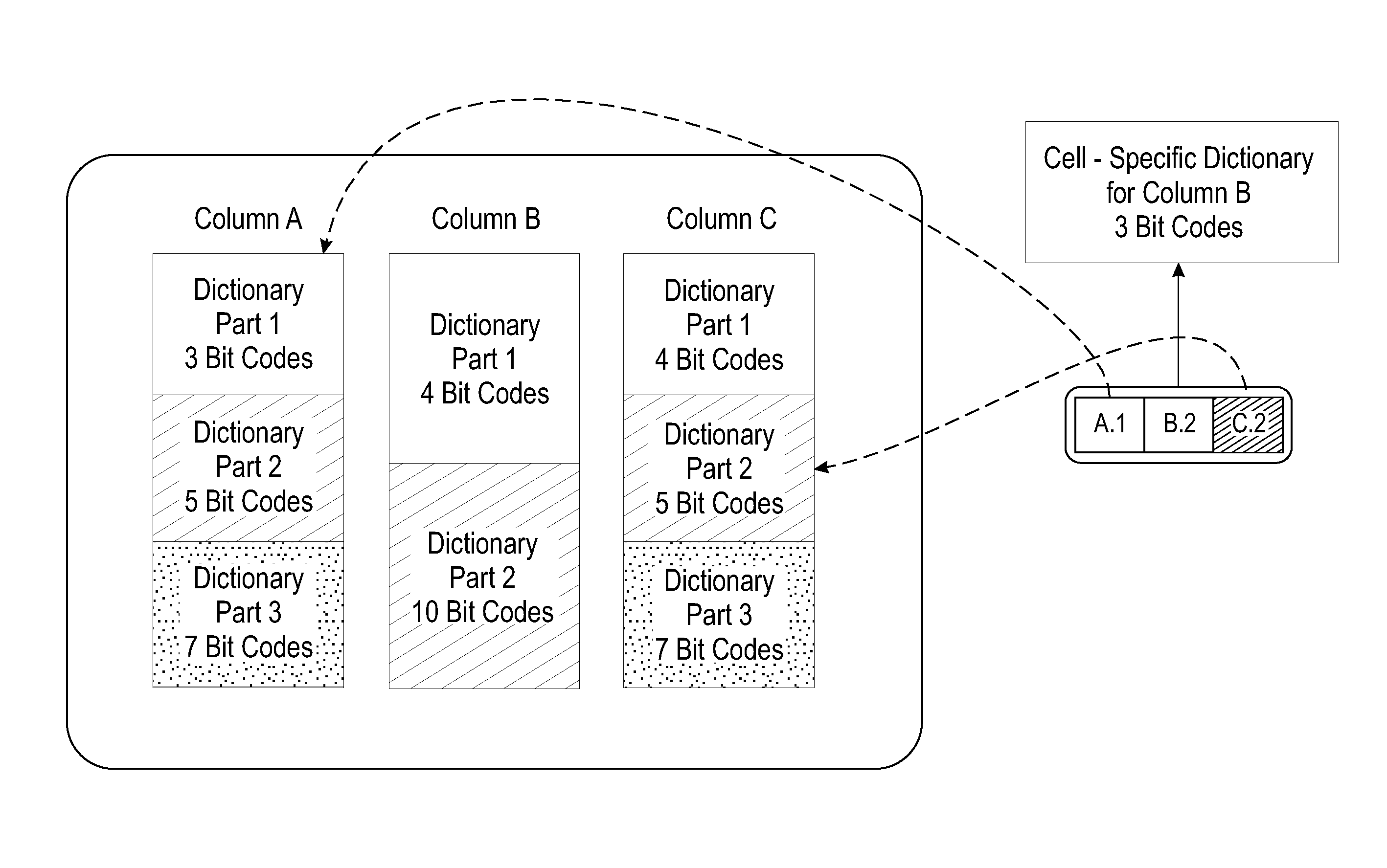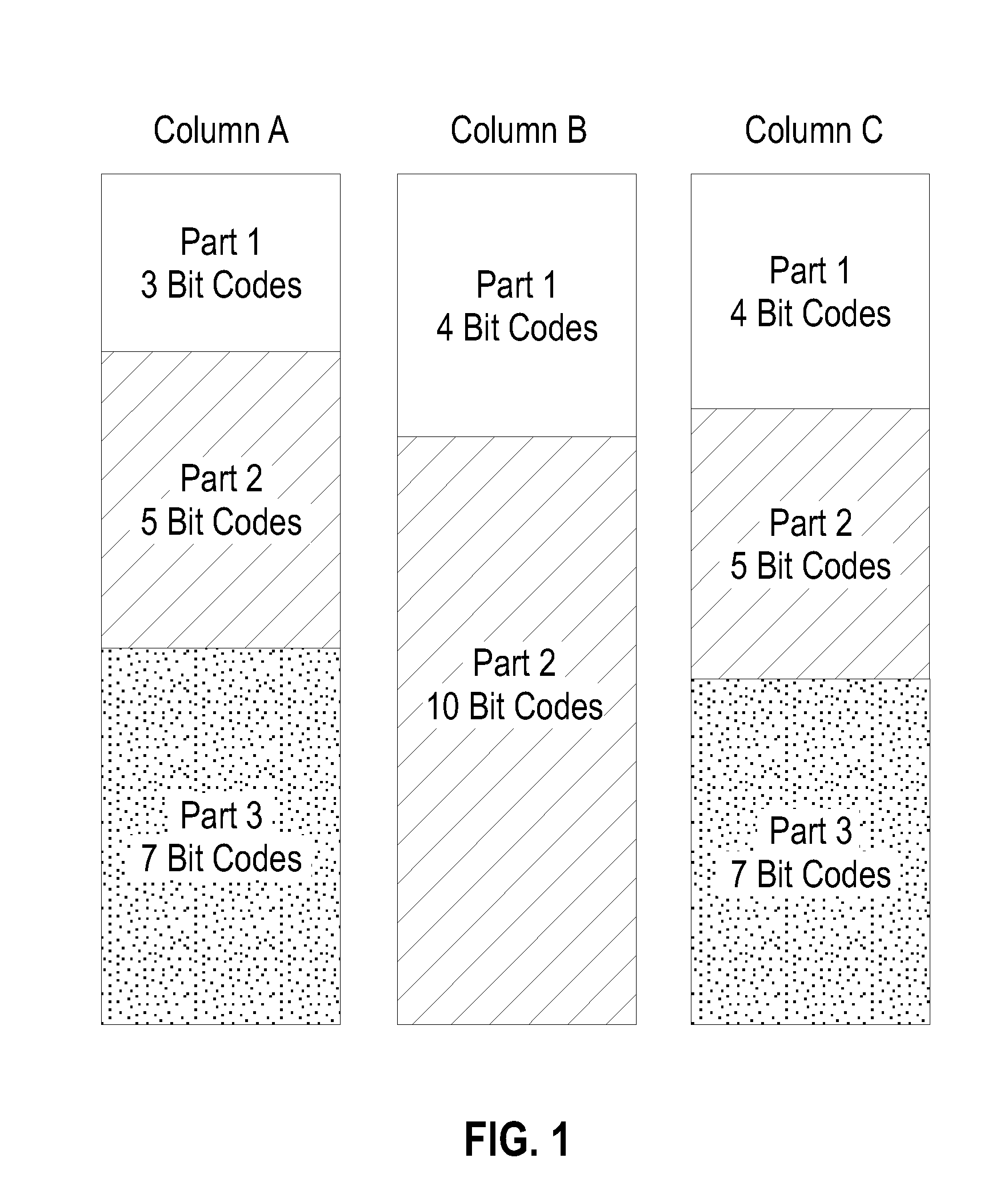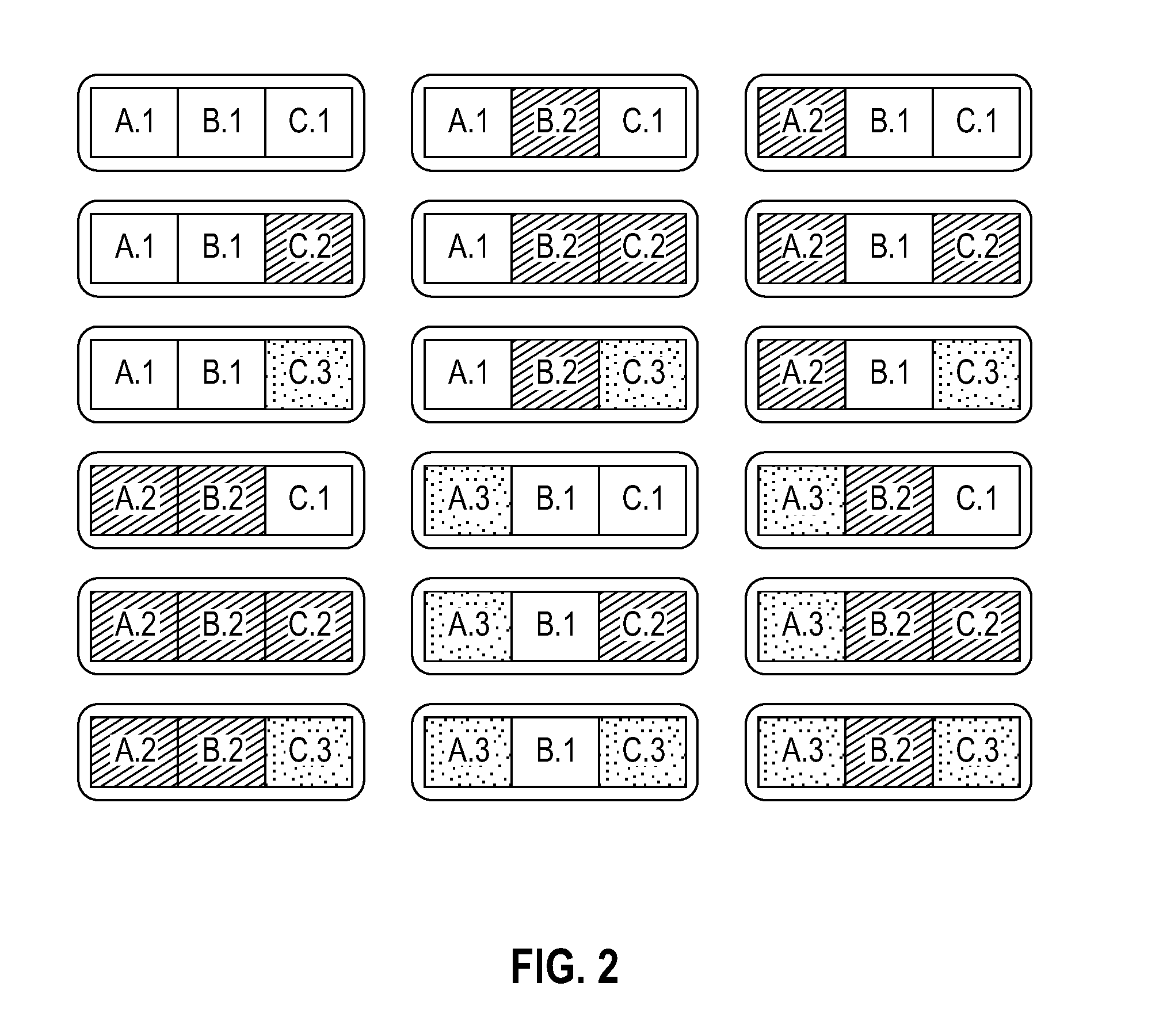Adaptive cell-specific dictionaries for frequency-partitioned multi-dimensional data
a multi-dimensional data and cell-specific technology, applied in multi-dimensional databases, database models, instruments, etc., can solve the problems of inability to adapt to the frequency partitioning of multi-dimensional data, inability to create cells with only few tuples, and waste of bits per value, so as to avoid the highly skewed data distribution in cells, improve query processing, and improve data partitioning
- Summary
- Abstract
- Description
- Claims
- Application Information
AI Technical Summary
Benefits of technology
Problems solved by technology
Method used
Image
Examples
Embodiment Construction
[0032]While this invention is illustrated and described in a preferred embodiment, the invention may be produced in many different configurations. There is depicted in the drawings, and will herein be described in detail, a preferred embodiment of the invention, with the understanding that the present disclosure is to be considered as an exemplification of the principles of the invention and the associated functional specifications for its construction and is not intended to limit the invention to the embodiment illustrated. Those skilled in the art will envision many other possible variations within the scope of the present invention.
[0033]The present invention provides a cell-specific dictionary that is applied adaptively to adequate cells. Such a cell-specific dictionary is used to subsequently optimize the handling of frequency-partitioned multi-dimensional data. This includes improved data partitioning with super cells or adjusting resulting cells by sub-dividing very large cel...
PUM
 Login to View More
Login to View More Abstract
Description
Claims
Application Information
 Login to View More
Login to View More - R&D
- Intellectual Property
- Life Sciences
- Materials
- Tech Scout
- Unparalleled Data Quality
- Higher Quality Content
- 60% Fewer Hallucinations
Browse by: Latest US Patents, China's latest patents, Technical Efficacy Thesaurus, Application Domain, Technology Topic, Popular Technical Reports.
© 2025 PatSnap. All rights reserved.Legal|Privacy policy|Modern Slavery Act Transparency Statement|Sitemap|About US| Contact US: help@patsnap.com



